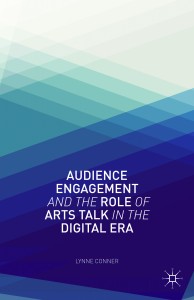 In two recent references (“In defense of the quieting of the audience” and “Etudes on Innovation: What the Performing Arts Can Learn From Sports Marketing”) to my publications on audiences, I’ve been described as a historian interested in critiquing the passive nature of contemporary audiences. I truly appreciate the interest in my work. Both Dianne Ragsdale and Mark Macnamara make some fascinating points in their essays (so you should read them if you haven’t yet).
In two recent references (“In defense of the quieting of the audience” and “Etudes on Innovation: What the Performing Arts Can Learn From Sports Marketing”) to my publications on audiences, I’ve been described as a historian interested in critiquing the passive nature of contemporary audiences. I truly appreciate the interest in my work. Both Dianne Ragsdale and Mark Macnamara make some fascinating points in their essays (so you should read them if you haven’t yet).
But I think what is missing from those references to my work is any acknowledgement of my emphasis on the process of meaning making: how it happens (culturally and cognitively) and why it is imperative to the health of the arts industry. My recent book, Audience Engagement and the Role of Arts Talk in the Digital Era, is devoted both to theorizing about the relationship between the opportunity to make meaning and the overall pleasure of an arts-going experience and to offering arts organizations tools and methods for encouraging what I call “Arts Talk.” Two other recent publications (“Music Talk” in Chamber Music Magazine and “Replacing Arts Appreciation with Arts Talk” in the Grantmakers in the Arts Reader) also explore the equation between the opportunity to participate in the meaning making process and engagement. And of course, those regular readers of “We the Audience” know that I’ve posted dozens of essays about this important subject.
In truth, from my very first publication on this topic (an article in the Grantmakers in the Arts Reader from 2004), I have attempted to make the argument that what contemporary audiences most need (and most lack) is not the chance to make noise in the auditorium but rather the chance to make meaning in a publically recognized way. These are not necessarily the same thing. Prior to the 20th century audience-generated social interpretation talking place outside the arts venue included everything from animated debates in coffee houses to street-level gossip to arguments waged in pamphlet wars to discussions hosted by audience leagues and arts appreciation societies. Audience members were comfortable discussing their taste and in openly formulating their opinions about a particular arts event. And while cultural gatekeepers certainly existed, they did not have the authority to regulate (or dampen) community discourse.
The problem with the engineered quieting of the audience that began in the late 19th century is not that the audience was forced to be literally quiet while experiencing the arts. The problem is that because of the sacralization of culture that accompanied the quieting process, the audience’s interpretive agency was quieted. In other words, when audiences became physically quiet they also were edged out of the meaning making operation.
Audience sovereignty over meaning and value was actively discouraged, turning what had long been a three-dimensional arts experience—witnessing an arts event/object and having the opportunity to participate in the articulation of its meaning and value—into a two-dimensional encounter often lacking the depth and pleasure of social interpretation. And so they became disengaged. By and large, they have stayed that way. That’s at least one reason why we can’t fill our concert halls, theaters and museums anymore.
As I argue in my book and here in my AJ blog, increasing opportunities for public meaning making is one cure for what ails us. A culture of Arts Talk promotes authentic conversation about the arts experience by creating venues for public meaning making about and around the arts.
This does not mean that meaning making on an individual, personal level is not important or valued. The private/internal contemplation of an arts experience is of course a part of every audience member’s experience: the brain is busy making meaning of everything it encounters. By stressing the importance of social interpretation I am not creating a hierarchy of value about how meaning should be made. And I’m not saying that every audience member wants or needs to express her opinion publicly.
Instead, I am attempting to acknowledge a fact about human psychology that the contemporary arts industry seems to willfully ignore: people like to interpret the meaning and value of the things that matter to them and many like to do that in a social context. As I illustrate in my book, there is a clear relationship, for example, between our culture’s steady interest in attending a sporting event, watching a television show, or joining a social reading on-line site, and the opportunity to participate in constructing its meaning. I think we need those opportunities in the arts as well.
In other words, I’m all about the meaning making. The bits from history are interesting, and useful in understanding the sea change that the sacralization of the arts in the late 19th century brought on, but they are not the point.

Sad, Lynne, that in 2015, the museum field still misses your focus on meaning-making. I focused on that topic with my Master’s dissertation in 2009. I was hoping your book and blog would create the waves necessary to focus museum professionals on meaning-making and conversation (talk). Change comes slowly! Thank you for your persistence.